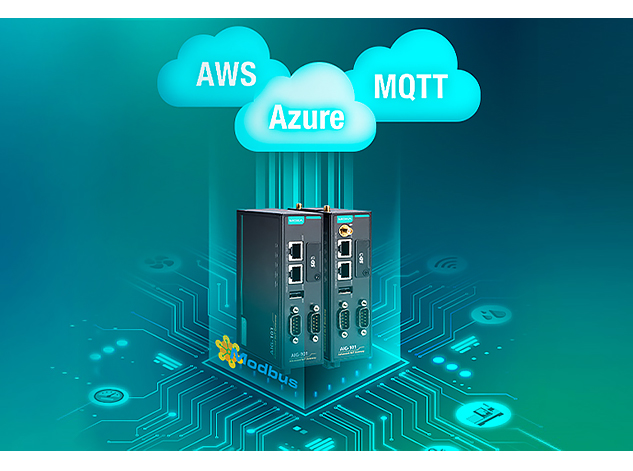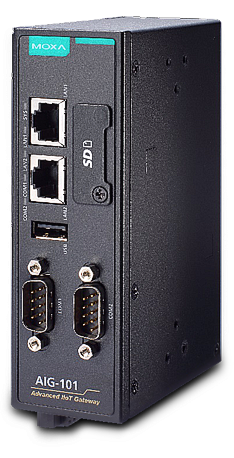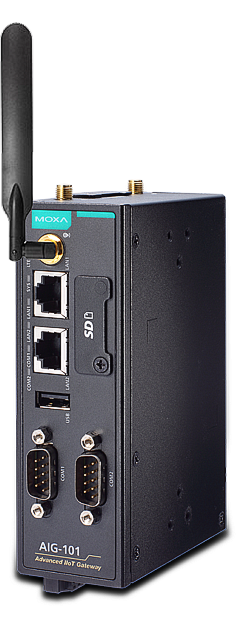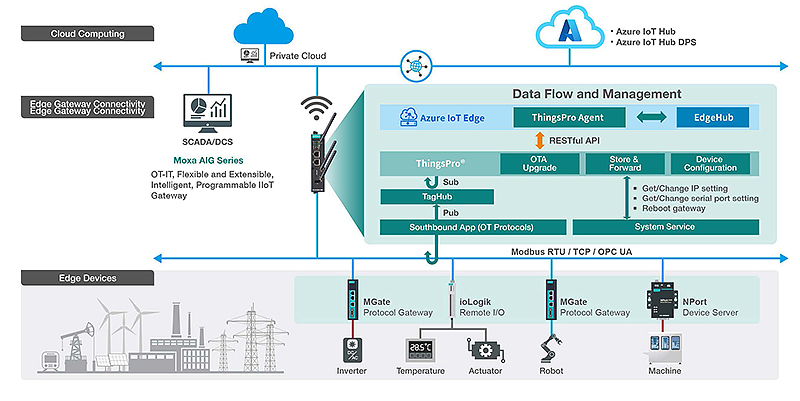
Moxa, in line with the rapid development of IIoT technologies, as well as actively growing trends in the integration of OT-IT systems, introduced a new series of entry-level IIoT gateways AIG-101 with support for the MQTT protocol. The presented series allows you to aggregate data received from end devices via the Modbus protocol and send them to cloud services, thereby ensuring seamless transmission of information to the upper level. In addition to the fact that the gateways work with field Modbus devices as a Master/Client, collecting information from them, they can also work in the Modbus TCP Server mode, broadcasting the received data, for example, to a local SCADA system. From the top-level side, to send data to cloud platforms such as Microsoft Azure and Amazon Web Services (ASW), gateways can act as an MQTT Client.
Key features of the AIG-101 gateway series:
- MQTT protocol support (Client)
- Integration with MQTT devices that have an SDK for communicating with Azure/AWS cloud platforms
- Modbus RTU/ASCII/TCP support in Master/TCP Client and TCP Server mode
- Built-in network traffic monitoring and diagnostic tool to simplify troubleshooting
- Support for data buffering using the storage function and transmission
- Easy integration with other Moxa devices (ioLogik /UPort) for fast system expansion
- Pre-processing data before sending it to the upper level
- Support for LTE Cat1. (AIG-101-T-EU)
- Operational temperature range of -40 to 70°C
The AIG-101 series is focused on use in various IIoT areas and includes two modifications:
AIG-101-T for communication with the upper level via wired Ethernet

AIG-101-T-EU with Internet access via LTE Cat.1.

To connect most end devices to cloud platforms, as a rule, not only an additional device with certain software is required, but also the need to program this device for the correct transmission of the received data. The AIG-101 series, in turn, already has built-in data pre-processing functions in its arsenal and is able to prepare the received data for sending them in the format required for cloud platforms. Thanks to an intuitive interface, the user can easily set up the transfer of the required messages "from device to the cloud" in a couple of clicks.
For a visual representation of the principle of operation of AIG-101, the data transformation process can be divided into 5 stages:
- Source selection determines what data should be included in telemetry messages
- Selecting the data acquisition mode, sets the method for obtaining the required data (receive all data, only the latest data, all changed data, or receive data only after they have been changed)
- Data format conversion (jq format) for correct transmission and display in cloud storage.
- "Merge JSON" stage and save data before sending (Buffering)
- Sending mode, allows you to set the conditions for data transmission by time: by interval, immediately or by size.
This classification allows you to separate messages according to predefined parameters and groups, moreover, IIoT gateways AIG-101 allow you to create messages for specific purposes. For example, the state of the environment (let's say humidity) can be measured at longer intervals, while the state of some important device in the plant needs to be monitored in a shorter period of time.



